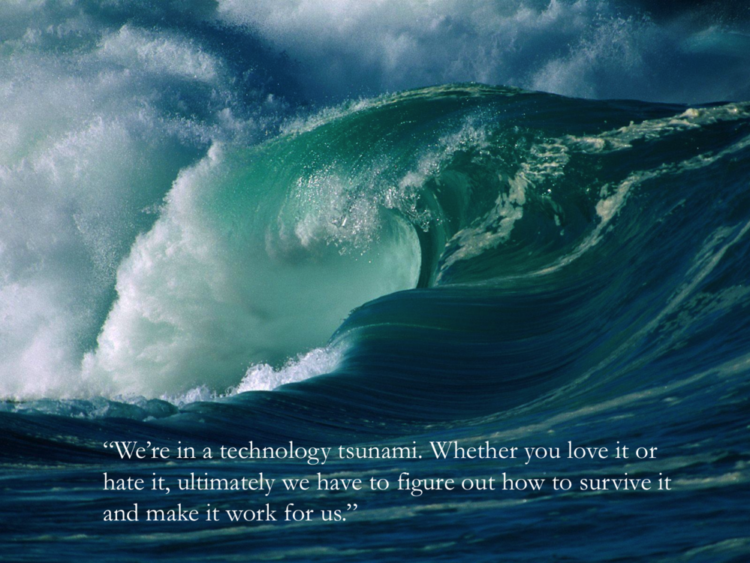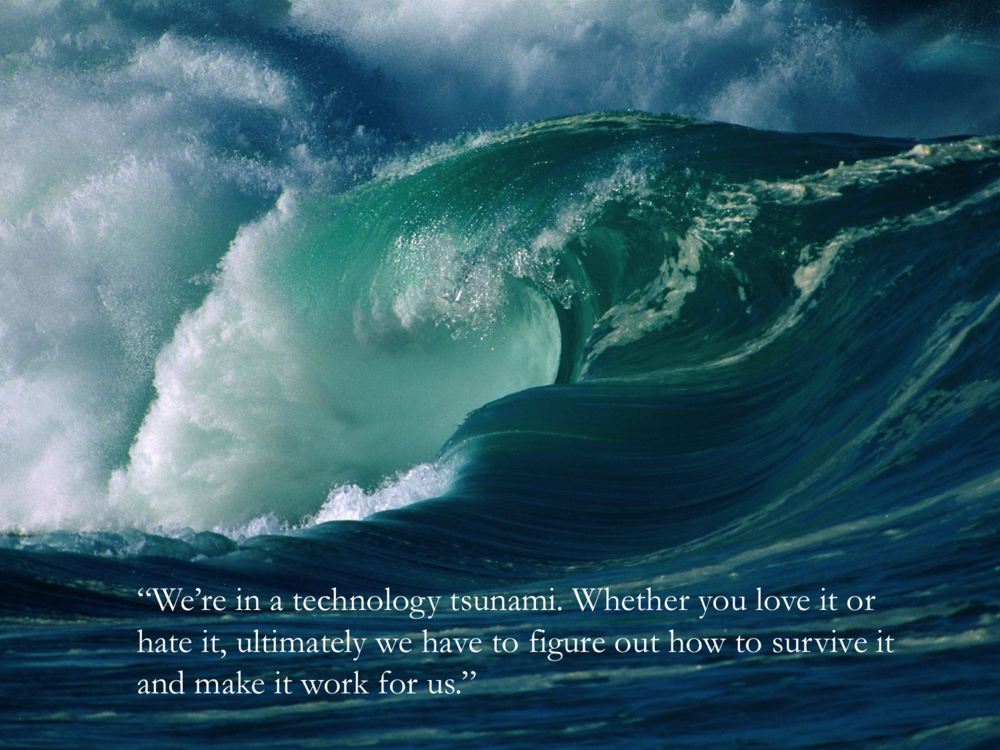Erik Straser, partner at Mohr Davidow Ventures, said that the most important thing you can do for your career is to “figure out how to ride a long wave – some immutable trend that is going to permeate most of the tenure of your career.” He suggests that you find a “wave” that coincides with your interest, skills, geography, and what you want to do with your life. For those who missed it see the video below.
Essentially, what he is trying to say is that your individual career path can be unpredictable (Even though most people put an intense focus on the first 10 years of their career, when there are more well-trod, obvious paths to an intermediate level of success). He argues that the general environment you have chosen to work in (i.e. your industry) may be even more important than your performance. The best typewriter salesman launching his career in 1975 probably did worse than your average computer science major at the same time.
Straser makes a great point, and over the past few days have spent a while looking into my crystal ball and trying to predict the future, in pursuit of the ultimate industry choice.
Stay with me a moment as I go way back to the beginning of human history and take a brief look at human economic development from the broadest perspective possible. I want to look at the record-breaking waves – the biggest of the big. Not the measly 100-foot waves that big shot surfers try to take on. I’m talking about the 1,700-foot-tall tsunamis.
Tsunami 1
To date, I consider that there have been three such tsunamis. The first tsunami is known to historians as the Neolithic Revolution – when mankind figured out how to domesticate plants and animals instead of running everywhere picking berries and chasing game. This leap to farming allowed the human race to settle down and start specialization of labor, leading to modern economies and governments.
After that, there were some decent sized waves – invention of the wheel, writing, etc. – but life continued in pretty much the same way, with humanity making relatively incremental advances, until the much more recent event of the Industrial Revolution.
Tsunami 2
Relatively simultaneous innovations like steam power, machine tools, fossil fuel energy, and effective democracy converged to change the multi-millennium worldwide economic growth trajectory, leading to the development of the middle class; stemming from the industrial revolution. The creation of the middle class was revolutionary because for the first time in history, people on a large scale had the time and the freedom to innovate. Previously, millions of Einsteins and Edisons had lived and died working in the rice patties or tending the sheep, but now they were postulating relativity and inventing light bulbs.
Tsunami 3
The distance between the Industrial Revolution and our final tsunami to date was then a mere 200 years. During the Information Revolution, with the invention of computing came a shift from an economy based on manufacturing to an economy based on information. With the ability to access computing power many times greater than our own brains, we have achieved things that humanity once only dreamed of.
We are still in the midst of the play out of the Information Revolution, as increasing integration of the physical and digital worlds (the Internet of Things, as it is being called) continues to revolutionize the way we use information to live our lives. I would argue, however, that these inventions are simply waves of the wheel and writing variety – they are surely significant, but are simply great extensions and improvements of the life made possible by the exponentially more important creation of the computer technology that served as the basis for their creation.
Tsunami 4 – What’s next?
I will also be as brash as to suggest that I know what the fourth great revolution in history will be, and even to give it a name: the Genomic Revolution.
Like steam power, machine tools, and democracy once converged to create the Industrial Revolution, the modern frontiers of technology – nanotech, 3D printing, robotics, artificial intelligence, gene splicing, and the like – are converging to a point where humanity will again be able to do something that was once at the very edge of science fiction: fast-track our own evolution.
I’m not talking about cyborgs. I’m talking about practical applications of emerging technologies in fighting disease, enhancing strength and recovery, and even extending our life span to previously unthinkable levels. As an example of what I’m talking about (and as evidence that we’re on the verge of these things happening), consider that the first 3-D printed human organ should be coming this year. 3-D printed organs have already been transplanted into mice, and it’s only a matter of time before it happens in humans, too. It will be great to eliminate the organ donor waiting list, as well as the risk of organ rejection (the patient’s own stem cells would be used), but it could also bring a new reality where, for example, we simply get a replacement heart every couple decades, essentially eliminating any heart-related disease or death. Even Mark Cuban agrees and postulates that the next vast land to concur as far as tech is concerned is in the realms of personalized medicine. Check out the article on Forbes written by Michael Wolf here.
I have been convinced by Dr. Aubrey de Grey’s book Ending Aging that I will be living longer than any human in modern history has lived to date. Think about the practical implications of this technology, and others like it that has the potential to multiply our life spans. Almost every aspect of our personal lives as well as society will be affected.
On a societal level, everything would change. It will make sense for the government to pay for every citizen to have a very high degree of education. $300,000 for a bachelors, masters, and doctorate makes sense when you consider that the individual’s tax contribution would be many times that size over a life span of a couple hundred years. Social Security and similar programs will be alive and well once more, as the scale of a couple hundred years of contributions would more than make up for the retirement period. On a personal level, almost every cost/benefit analysis that we make (i.e. everything in life) will also have totally different parameters.
After the world gets over the irrational fears that spring up when the possibility of living hundreds of years is presented to them, the demand for these types of products and services will be like nothing ever seen before, making phenomena like the explosion of computer sales pale by comparison. And living (much) longer is only one aspect of this revolution – the exponential expansion of our physical and mental abilities will be just as great an industry.
How to Hang
So my advice – if you’ve decided it’s time to move on from the generalist route (general corporate business roles, investment banking, consulting, marketing, law etc.), the exponential growth industries in the near future are going to be 3-D printing, nanotech, robotics, AI, the Internet of Things, and the like. Just don’t miss the Genomic bus when it comes around.
The trick, of course, is in the timing – I can’t give you an accurate timeline for when this will replace the computing industry as the highest velocity in history. In terms of career, I’m still playing the generalist, not committing to any one industry apart from tech. I look forward to become a significant contributor to the Genomic Revolution. As that revolution approaches, these areas will be safer and surer as a career move, so I’m still weighing a move to concentrate on traditional biotech. One thing I can say for sure is that regardless of whether or not I get the timing well enough to enjoy the economic benefit of the revolution, there isn’t anything right now that is exciting to me as these possibilities. Of course, a lot of people will do awfully well in a great many other industries. But this is my best guess as to the biggest wave there will be in my lifetime. I recommend we all seriously consider it.
Keep hustling, my friends.





